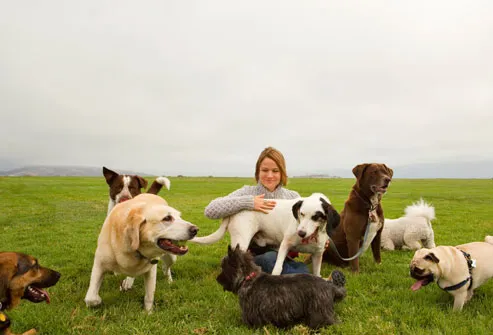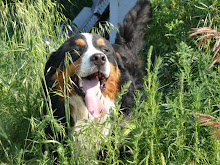
So you've seen the neighbor's cute little puppy and you want one too? You have the money for the initial purchase, but are you really ready? Before you go and grab Fido, consider these things:
Time: All dogs take time, but some dogs take more than others. And not just for the exercise, but also for grooming, training and socialization as well. For instance, though they can be roughly the same size, you are going to spend much more time in the care of a Yorkshire Terrier than you are on a shorthaired Miniature Dachshund.
Money: After the initial purchase is made there is still money to be spent concerning your pet. After all, Fido's going to need food for the rest of his life and veterinary care when he's sick. Also remember to factor in the cost of vaccinations, spay/neuter, and deworming. Not all dogs come fixed or with their shots, and it will be your responsibility to make sure these are taken care of.
Family/roommates: If you have others living in your household, are they okay with the idea of a dog?
If that's managed not to scare you off, there are some things to consider, such as the breed of the dog. Different breeds have different purposes and these purposes play a large role in how your dog will act within environment. So when thinking about a dog to obtain, please consider these important points:
Energy levels: Some breeds of dog are naturally couch potatoes, but many breeds enjoy a lot of activity. This is when it's time to do a little research on the background of your breed. Working and hunting breeds are two categories that were bred for a lot of activity so it's not uncommon for them to require large amounts of exercise and activities. Dogs with large requirements of actives often become bored in houses or yards with nothing to do. This often causes the dog to resort to destructive measures for amusement.
Size: Dogs come in many shapes and sizes. Just because Sparky's a cute little puppy now, doesn't mean he'll necessarily stay that way if you didn't check out the typical adult breed size beforehand. Always check the average height/weight of the breed you'd like.
Grooming: Some dogs need a few minutes a week, some need a few minutes a day. A few need much more. Keep in mind that if you get a dog with long hair, it is possible that you will have to cut it yourself to keep it manageable or you will have to pay someone else to do it. A note on shedding is that it is untrue that long haired dogs shed more. It depends on the breed in question and the weather. A short haired dog like a Lab will probably shed much more over the course of it's life than a dog like a Brittany. The key is a good brushing. Bathing often is more likely to make shedding problems worse than better as your dog's skin dries out.
Warning: Don't buy into the hype you hear. There is no such thing as a 100% shedless dog. Even poodles shed but it is much, much less often and in tight curls. There's no such thing as a 100% hypoallergenic dog either. If you have very severe allergies to dogs then it is likely that dogs named hypoallergenic are still going to cause you some irritation.
Inside or Outside: Where will your dog spend most of it's time? While it's possible for all dog breeds to live indoors (provided the housing is adequate), there are certain breeds of dogs that don't fare well outside due to being prone to certain health problems. "Smush-faced" breeds like English Bulldogs and Pugs will probably have difficulty in hot weather due to breathing problems, while thin or "hairless" breeds like the Chinese Crested don't do well in the cold.
Trainability: Over the years dogs have been bred for different roles. While some are bred to work with constant directions from a handler, others are bred for the ability to move independently of their masters on a regular basis. And while all dogs are trainable, the latter tends to to be more difficult to the beginner. It is best for a new dog owner obtain a dog with ease of trainability.
Prey Drive: Basically, these are the motions a predatory animal goes through when killing prey. In dogs however, prey drive has been modified to suit human purposes. All dogs have some level of prey drive, and it's likely that you've seen it. A dog chasing its ball is exhibiting prey drive. So is a dog that chases a squirrel or a Border Collie that's herding. Prey drive in breeds can be anywhere from high to low, with non-working and lapdog types generally being low and working/hunting breeds generally being high. The level of prey drive can also affect trainability and what can be used to motivate the dog during training. Prey drive may also aid in determining how your dog acts with any other pets you may have or just other animals in general.
Breed purpose: Whether or not you intend to use the dog for it's original purpose or not, you must still be aware of the purposes of the dog you want to obtain if you want to avoid clashes in his personality and yours. For instance, if you were a person who doesn't enjoy noise, then it would be a bad idea to get a dog like a Beagle. While Beagles are cute, they are a breed of dog that is bred specifically bred to make sound as they trail interesting scents, so they cannot be blamed for doing what comes naturally.
Still haven't managed to scare you off? Then let's check out places to obtain a dog.
Shelters: Today, shelters are a popular place to obtain a dog. Dogs present at shelters vary in size and breed. Most dogs at shelters today however, are mixed breeds. Dogs end up at shelters for a variety of reasons, such as seizure from abusive homes and abandonment. The pros of shelter dogs is that they tend to cost less than a dog from a breeder, and they usually come fixed and with shots. The cons are that dogs taken from abusive situations tend to require training beyond the scope of the new owner's capabilities. A dog that is overly nervous may injure a person. Puppies also, must be taken into consideration. While they may be cute, you may never know how large a mixed breed puppy will get or what the temperament is likely to be. However, don't let that scare you off. Shelters have proven excellent places to get yourself a furry friend.
Breed Rescues: Breed rescues are different from shelters in the fact that they tend to deal with the rescuing of one breed and possibly their mixes. They come from several of the same situations shelter dogs can come from. The pros of rescue dogs is that breed rescue dogs tend to be fostered, which can give greater insight to the personality of each dog. They also tend to come with shots and are fixed. The cons of a breed rescue lie mainly in cost of adoption, which is generally much more than found in shelters.
Breeders: Breeders are people that may breed one type of dog or possibly several breeds. Pros of breeders lie in the good breeders. A good breeder knows the personalities of his animals and breeds for temperament along with the physical standards he or she is trying to maintain. A good breeder also knows his breed well and may give you tips in care you hadn't known before. A good breeder will also carefully oversee the selection process and may even help you match a puppy to your personality. Cons lie in bad breeders who are more into breeding for the money, rather than the continued existence and health of the breed. These breeders will allow dogs to go to anyone with little question, so long as the price is right and this can mean a number of bad traits in your dog. Be VERY cautious in breeder selection.
All in all, make sure that you don't rush into getting a dog, and take the time to examine your resources. Communicate freely with the people you are receiving your dog from, and don't be afraid to ask questions or seek alternate opinions.
Good luck with Fido!
-Post submitted by "Good Beef"

No comments:
Post a Comment
Comments are welcome and encouraged.
We want to hear from you so feel free to add your two cents.